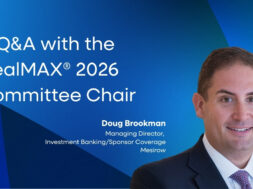No Gifts in Proposed Partnership Audit Regulations
New partnership audit rules define who can elect out of the new audit regime and enable the IRS to assess taxes directly against the partnerships it audits.

New partnership audit and collection regime rules will soon go into effect, defining who can elect out and enabling the Internal Revenue Service to assess taxes directly against the partnerships it audits.
The rule regime, enacted in 2015, will become effective for partnership tax years beginning after 2017. The rules will replace those that currently apply to partnership audits, with the goal of enhancing the IRS’ ability to conduct examinations. The preamble to the new rules confirms that the IRS will step up its audits—including for partnerships that elect out of the centralized regime.
Who Can Elect out
Partnerships with no more than 100 partners that meet certain requirements may elect out of the new centralized audit regime. Each partner must be an individual, estate of a deceased partner, C corporation, S corporation or a foreign entity that meets particular criteria. It can be a foreign company recognized as a corporation by U.S. tax law, known as a per se corporation; elect to be treated as a corporation; or default to treatment as a corporation—so long as no election is made to treat it as a flow-through.
The IRS did not use its authority to extend relief to partnerships with partners that are partnerships or trusts. Among those that will not be eligible to elect out are partnerships whose investors include funds-of-funds, tax-exempt organizations formed as trusts, 81-100 trusts (i.e., trusts made up solely of pension funds) and LLC general partners.
The rules will replace those that currently apply to partnership audits, with the goal of enhancing the IRS’ ability to conduct examinations.
Also deemed ineligible are disregarded entities—business entities with a single owner that are not recognized as separate from their owner for tax purposes—and nominees. This may surprise some because the owner of the disregarded entity or beneficial owner—rather than the disregarded entity or nominee—should be considered the owner under the IRS’ own authorities. This could be changed in the final regulations: Tax experts agree that it seems inappropriate, because disregarded entities and nominees would not increase the number of partners in a partnership.
The IRS will be conducting examinations to confirm that partnerships that elect out of the new regime are eligible to do so. The agency will be evaluating the character of the partners to ensure that they are eligible, and whether multiple partnerships really should be considered to be a single partnership with either ineligible partners or too many partners.
Rules enacted before the Tax Equity and Fiscal Responsibility Act of 1982 apply to partnerships that elect out of the centralized regime. This means that in order to collect tax related to underreported partnership items, the IRS will have to initiate proceedings directly against the partners.
Pay the Underpayment?
The primary change made by these new rules is the ability of the IRS to assess tax directly against the partnerships it audits. The partnership then must either pay the “imputed underpayment” or elect to push out to its partners the obligation to pay.
The imputed underpayment, or IU, is the sum of the net adjustments at the partnership level, multiplied by the highest rate of tax (currently 39.6 percent), plus or minus any change in tax credits.
If the net change is not positive, it will not result in an IU. It generally must be treated as a decrease in income or as an increase in loss in the year that the IRS makes the adjustment—rather than in the tax year under review by the IRS.
The proposed regulations explain that there will be three main groupings of adjustments: reallocations among partners; adjustments to partnership tax credits; and all remaining adjustments (the residual grouping). Within these, there may be several subgroups based on character, preferences, restrictions and limitations.
Doing the Math
For example, within the residual grouping, there would be a subgrouping for ordinary income and one for capital gain. If a partnership reports $1 million of long-term capital gain that the IRS determines was ordinary income, there would be an increase of $1 million in the ordinary income subgrouping of the residual grouping, and a decrease of $1 million in the capital gain subgrouping.
The two adjustments would not offset. The IU would be $396,000 ($1 million multiplied by 39.6 percent). Interest and applicable penalties would be due on this amount. This would be payable by the partnership. Unless the IRS also determined that the partnership underreported capital gain by at least $1 million, the $1 million reduction in capital gain would be treated as a reduction of capital gain in the year the adjustment was made.
Push-out Election
Rather than pay the IU, a partnership may elect to “push out” adjustments to the reviewed year partners. In this instance, partners take into account their share of the adjustments. The election must be made within 45 days of the mailing of the final partnership adjustment, and no extensions are permitted.
The election may be made with respect to some or all of the adjustments. Assuming the partnership makes the election, the partners must take into account the impact of the change for the year under review, as well as any intervening year. The aggregate of these adjustments, together with interest—at a higher than usual rate—and penalties, are paid in the taxable year. It includes the date a push-out statement was furnished and not through amendment of the return for the reviewed year. This eliminates the statute of limitations issue that concerned the IRS under current law.
Taxation with Representation
A partnership must have a partnership representative. The partnership representative is in lieu of the tax matters partner under current law. Unlike a tax matters partner, a partnership representative, or PR, need not be a partner.
Any person or entity may be a PR, but it must have the capacity to act. It must also have a substantial presence in the U.S. (though it need not be a U.S. person). The PR must be able to meet with the IRS in the U.S., have a U.S. taxpayer ID number, and have a U.S. street address and phone number where the IRS can reach it during normal business hours. If an entity is appointed as the PR, an individual with a substantial presence in the U.S. also must be designated.
The partnership generally cannot change the PR, except in connection with the audit of the partnership, or if the partnership files a request to make an adjustment to a partnership return (other than to appoint a new PR or designated individual). If the partnership fails to appoint an appropriate PR in a timely manner, the IRS may do so.

Steven Bortnick is a partner in the tax practice group at Pepper Hamilton LLP. He also is a member of the firm’s investment fund industry group, which includes more than 40 attorneys with diverse backgrounds and experience devoted to the investment funds industry.


